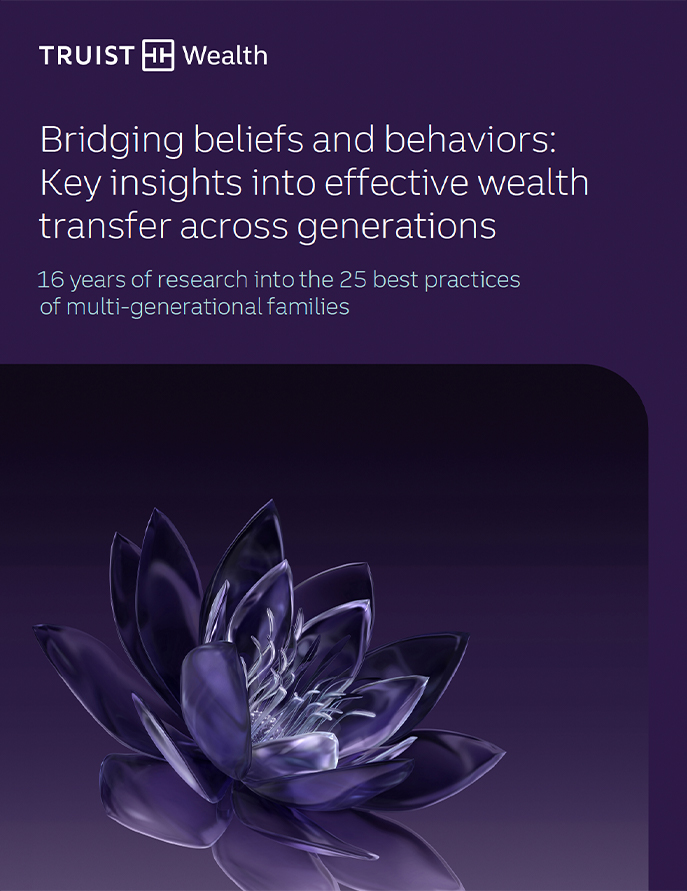
Six Components of Financial Literacy for Wealth Preservation
Center for Family Legacy Wealth literacy: Empowering the next generation
Learn how to approach personal finances, investing, philanthropy and more.
Article
08/19/2024
Six Components of Financial Literacy for Wealth Preservation
Equip the next generation with core components of financial literacy to help ensure generational wealth preservation. Learn how to approach personal finances, investing, philanthropy and more.

The intersections of emotions and money | Truist
Center for Family Legacy The intersections of emotions and money
Emotions can emerge when you inherit assets. Here’s how to handle them.
Article
02/08/2024
The intersections of emotions and money | Truist
Emotions are common after inheriting stocks, bonds, property, and other assets. Here’s how to handle them and honor your loved one’s legacy

